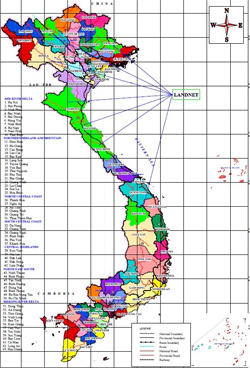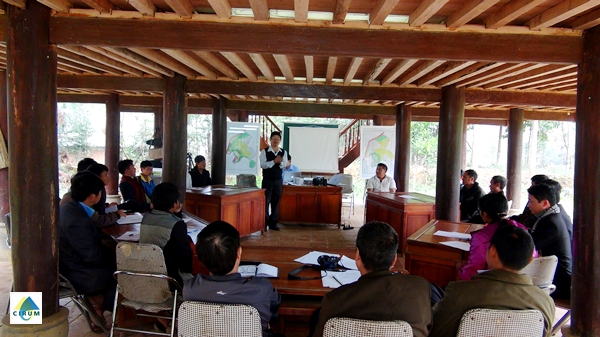
The Seminar was held in Si Ma Cai Farmer Field School (FFS) on 18
th March 2016, with 25 participants, including represetatives of communal leaders, LandNet coordinators/members, villagers living in Si Ma Cai District and CIRUM stafff.
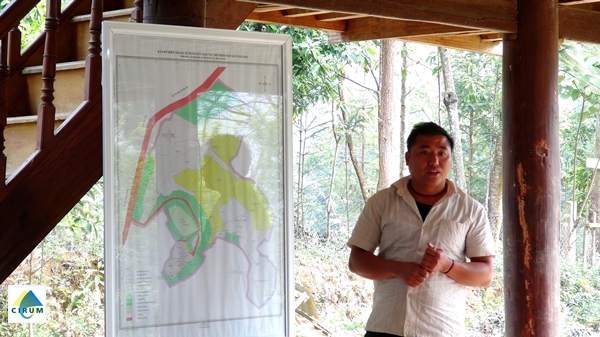
Mr. Giang A Su of H’Mong ethnic group, Organic Farming Manager at Si Ma Cai FFS, introduced four different functionals areas (agroforestry production, livestock raising and farming, local forestry nursery and natural forest regeneration) at Simacai FFS. After that, a short video made by CIRUM and Si Ma Cai District Television was also shown for the productive local forestry seedlings nursery with diversified species
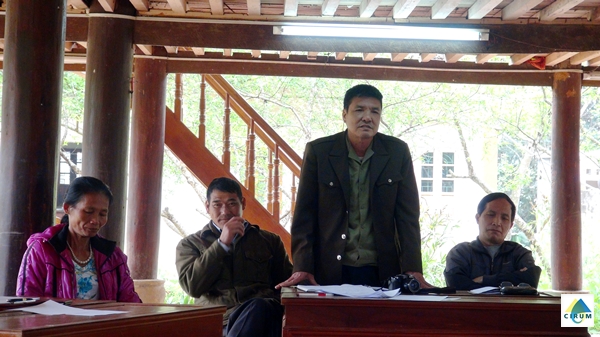
Mr. Le Kien Cuong, LandNet coordinator from Lang Son Province shared the activities of LandNet in relation to forest recovery and development by local forestry species at LandNet based project sites. Currently, LandNet covers six provinices of Nghe An, Ha Tinh, Quang Binh, Lang Son, Lao Cai and Kon Tum. LandNet encourages local authorities and especially LandNet members to join the network, and promotes members to share experience on forest protection and developlement respecting values of customary law and local species.
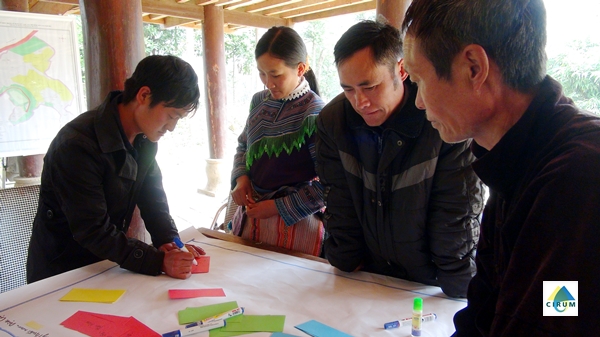
Divided into five groups, the participants joined the first group activity to identify local forestry species growing in their own region and which types can be planted intergratedly.

The participants draw out local forestry species that have been well growing in their own areas. Then, they classified into 5 levels: long-term timber forestry species , middle-term, short-term, orchard and herbal plants. They also shared experience on how to grow these local forestry species on their allocated forest land to be adapted for their own climate conditions
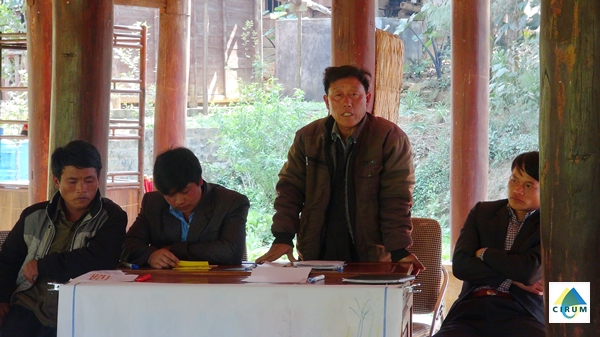
The participants also shared difficulties in getting quality of seedlings, as well as harsh climate conditions, and lack of technical knowledge to make sure that survival rate of planted seedlings are well growing. They have asked for supporting seedling sources and more training courses in forest planting.
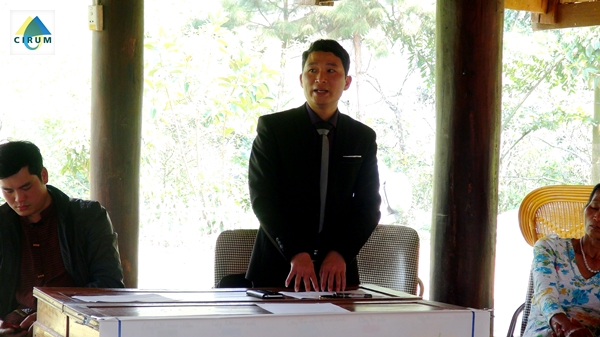
Mr. Vu Van Son, Chairman of Quan Than San Commune People’s Committee, asserted his concerns about forest protection and development mechanism in his commune. He suggested to make used values of customary laws in forest protection and development, since the government laws do not work at local level. Currently, the support of the government in forest protection and reforestation is relatively low. Eg. The fee for payment environmental services is as low as 19000 VND ( ~ USD 0.8) /ha/year. Thus, we need to get more financially support to ensure a stable life for villagers.
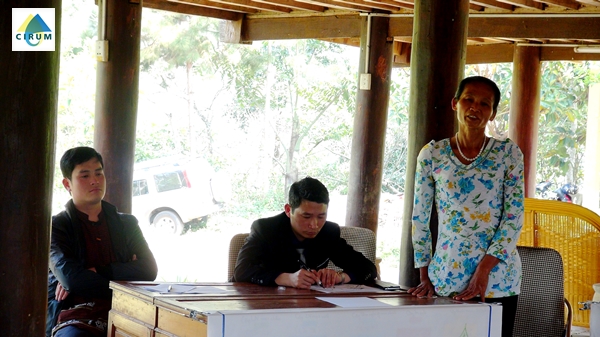
Ms. Tran Thi Dao, LandNet member from Ha Tinh province tell her story on how to protect the forest and development. She said “(re)forestation is hard, but to protect it is even harder. Firstly, it is needed to have consensus of the whole family members in forest management to benefit themsevles. Every member is responsible for forest protection and development. Secondly, common community voice is very important for forest management. Whenever, if someone see something wrong with the forest, he/she immediately informs by mobile phone to villagers for gathering to solve the problem. We have informal regulation to follow. By doing this, our forest is well protected. We control our forest”. She continues: “We received Red Book in 2002 (long term forest management certificate), and we manage 26 ha of forest area, which generates stable income for living”.
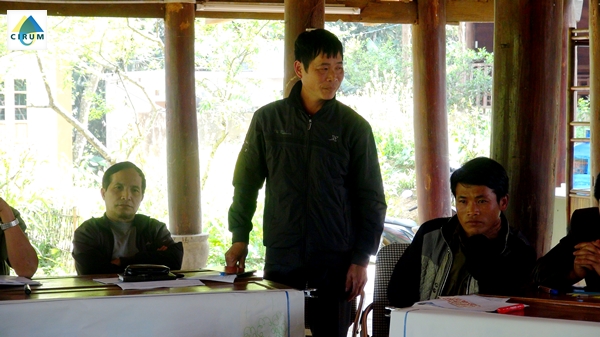
Mr. Ha Van Chau’s family, Tay ethnic group from Lang Son Province received Red book in 2004 for 24.6 ha of forest. Now being the Vice Coordinator of LandNet Lang Son, Mr.Chau emphasized that forest protection will bring a lot of benefits, firstly for his own family. His forest area provides water for more than 2 hectare of paddle field of the whole village. His model has encouraged many households in the community to start protecting and developing forest.
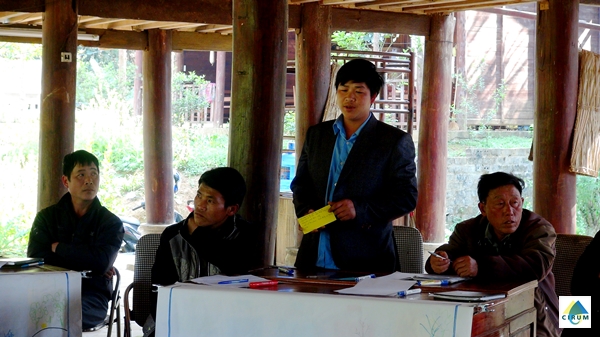
Leng Van Suong of Nung ethnic group is now living in Ban Me Village, Si Ma Cai District, Lao Cai Province, and he inherited 4 ha of forest from his parents. The benefits of reforestation may not be seen right away, he said, but in the long run of the next 5 or 10 years, the forest is the huge fortune. “We should not just stay there and wait for the forest to grow itself, but we have to do the reforestation. In the next few years, I will continue planting local forestry plants”, Suong said. He also suggested that the Government needs to improve the policies to support forest protection and development. Thuong’s family only received 500,000VND (~ USD 23) for their 4 ha of forest in the period of 3 years.
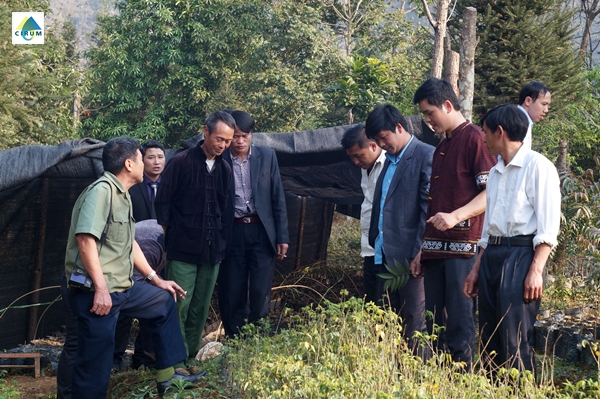
The participants then visited local forestry nursery.With the area of 6000m2, the nursery has 10,000 Indian mahogany (
Chukrasia tabularis), 30,000
Melia azedarach, 10,000
Magnolia conifera, 15,000
Cunninghamia, 3000
Dalbergia tonkinensis and 6000 local Ta Van plum.
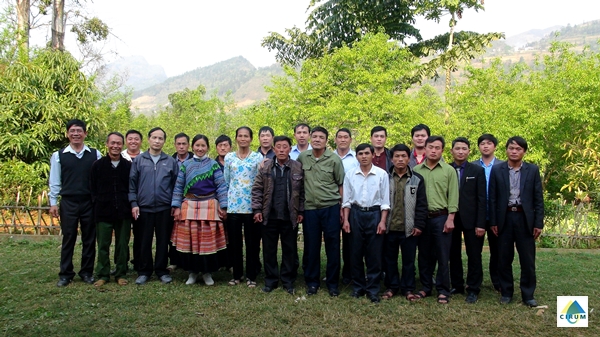
By the end of the discussion, the participants expressed their understanding and interest in developing local forestry species on their own forest. 10 participants are willing to join Lao Cai LandNet, making the total number of LandNet members in Lao Cai up to 16, including 1 H’Mong woman for forest protection and local management.











